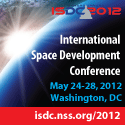Nanotechnology Now |
Home > Press > Ben-Gurion University scientist solves nanoelectronics puzzle
Abstract:
Ben-Gurion University of the Negev's theoretical physicist, Professor
Yigal Meir has solved one of nanoelectronic's most longstanding puzzles,
which has baffled physicists seeking to make smaller, faster computer
devices for more than a decade.
Ben-Gurion University scientist solves longstanding nanoelectronics puzzles
Beer-Sheva, Israel | Posted on October 05, 2006
Ben-Gurion University of the Negev's theoretical physicist, Professor
Yigal Meir has solved one of nanoelectronic's most longstanding puzzles,
which has baffled physicists seeking to make smaller, faster computer
devices for more than a decade.
Nanoelectronics refers to electronic transport through miniaturized
devices. The simplest such device, and the basic building block for
more complicated devices, is a quantum point contact, a constriction
connecting large electron reservoirs.
In a paper published in Nature Magazine, the professor explains
the 0.7 anomaly, a feature in the conductance of quantum point contacts
that has so far eluded explanation for almost 20 years.
According to quantum mechanics, and the wavelike nature of electrons,
scientists expected the conductance through such a device to increase as
the gap grew bigger by integer steps of universal value. While this
was indeed found true in early experiments, surprisingly, an additional
first step, approximately 0.7 times the expected universal value had
also been observed, which scientists first attributed to irregularities
in the device (the 0.7 anomaly as it became known).
While visiting Princeton University, Meir and a colleague, Ned Wingreen,
theorized the existence of a magnetic impurity, a localized electron,
in a quantum-point contact to explain the 0.7 anomaly. While their
theoretical calculations explained its temperature and magnetic-field
dependence, they still needed to identify the proposed impurity to
overcome physics community skeptics about how a magnetic moment could
form in such a system. The classical analogy of a quantum point contact
is a sea of electrons around a hill, Meir explains. The existence of a
magnetic impurity on the point of contact is equivalent to the
formation of a puddle of water at the top of the hill, a
counterintuitive phenomenon.
In the Nature paper published with his Ben-Gurion University
postdoc, Dr. Tomaz Rejec, Meir explains, via extensive numerical
calculations, that the existence of a magnetic impurity at the quantum
point of contact is possible because a lower density of the electrons
near the quantum point attracts the other electrons toward the point.
The wavy nature of such electrons then causes the quantum point to form
ripples, trapping an electron and causing the 0.7 anomaly.
This is both good and bad news for quantum computer devices based on
quantum dots which require that no outside factors affect the circuits,
Meir concludes. Magnetic impurities at point contacts would render such
computer devices inoperable. However, the magnetic impurity is formed
only when conductance through the point of contact is around 0.7, so
setting the conductance of each contact below that value should allow a
circuit formed by quantum dots to function.
About Ben-Gurion University of the Negev:
Ben-Gurion University of the Negev is more than a world-renowned
institute of research and higher learning. BGU builds bridges of peace
between Israel and it neighbors through cooperation in science, research
and development. It is the link between academia and industry, Israel
and the developing world. BGU is a university with a conscience, where
the highest academic and scientific standards are integrated with
community involvement, and where the dream of Israelís first Prime
Minister, David Ben-Gurion, to make the desert bloom is fulfilled.
For more information, please click here
About American Associates, Ben-Gurion University of the Negev:
Founded in 1972, AABGU is a partner in the University's mission to
develop the Negev and build a world-class institution of research and
education in the desert. A nonprofit organization with its national
headquarters in New York City and 10 regional offices throughout the
United States, AABGU plays a vital role in helping BGU fulfill its
unique responsibility to develop the bold new vision for the Negev, the
focus of the future of Israel and the world.
For more information, please click here
Contact:
Andrew Lavin
andrewlavin@alavin.com
Copyright © Ben-Gurion University of the Negev
If you have a comment, please Contact us.
Issuers of news releases, not 7th Wave, Inc. or Nanotechnology Now, are solely responsible for the accuracy of the content.
| Related News Press |
Quantum Computing
![]() Floor van de Pavert: seeing the (almost) invisible with nano-wires quality - part 2 April 19th, 2012
Floor van de Pavert: seeing the (almost) invisible with nano-wires quality - part 2 April 19th, 2012
![]() Sander Dorenbos: seeing the (almost) invisible with nano-wires quality - part 1 April 19th, 2012
Sander Dorenbos: seeing the (almost) invisible with nano-wires quality - part 1 April 19th, 2012
![]() Nanoscientists find long-sought Majorana particle April 16th, 2012
Nanoscientists find long-sought Majorana particle April 16th, 2012
![]() Quantum Control Protocols Could Lead to More Accurate, Larger Scale Quantum Computations April 4th, 2012
Quantum Control Protocols Could Lead to More Accurate, Larger Scale Quantum Computations April 4th, 2012
Nanoelectronics
![]() Next-Generation Nanoelectronics: A Decade of Progress, Coming Advances May 3rd, 2012
Next-Generation Nanoelectronics: A Decade of Progress, Coming Advances May 3rd, 2012
![]() INIC Planning More Technically Complicated Nanotechnology Olympiad April 30th, 2012
INIC Planning More Technically Complicated Nanotechnology Olympiad April 30th, 2012
![]() Self-assembling highly conductive plastic nanofibers April 23rd, 2012
Self-assembling highly conductive plastic nanofibers April 23rd, 2012
Discoveries
![]() Printing with Lasers: Making Electronics Quick and Easy May 17th, 2012
Printing with Lasers: Making Electronics Quick and Easy May 17th, 2012
![]() Simulated digestion: nanomaterials improve drug absorption May 17th, 2012
Simulated digestion: nanomaterials improve drug absorption May 17th, 2012
![]() Treating gaseous BTEX using novel photocatalytic approach May 16th, 2012
Treating gaseous BTEX using novel photocatalytic approach May 16th, 2012
![]() Imec and Holst Centre Report Single- Chip Ethylene Sensor to Monitor Fruit Ripening May 15th, 2012
Imec and Holst Centre Report Single- Chip Ethylene Sensor to Monitor Fruit Ripening May 15th, 2012
Announcements
![]() Penn Researchers Recognized for Improving Nanotech Design Principles May 17th, 2012
Penn Researchers Recognized for Improving Nanotech Design Principles May 17th, 2012
![]() Computing
experts unveil superefficient 'inexact' chip: Rice University experts
challenge computing dogma, win 'best paper' accolades May 17th, 2012
Computing
experts unveil superefficient 'inexact' chip: Rice University experts
challenge computing dogma, win 'best paper' accolades May 17th, 2012
![]() Mato Knez receives Gaede Prize 2012 May 17th, 2012
Mato Knez receives Gaede Prize 2012 May 17th, 2012
![]() Printing with Lasers: Making Electronics Quick and Easy May 17th, 2012
Printing with Lasers: Making Electronics Quick and Easy May 17th, 2012
|
|
||
|
|
||
| The latest news from around the world, FREE | ||
|
|
||
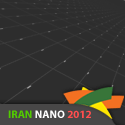
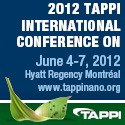
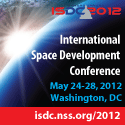
|
|
||
| Premium Products | ||
|
|
||
|
Only the news you want to read!
Learn More |
||
|
|
||
|
University Technology Transfer & Patents
Learn More |
||
|
|
||
|
Full-service, expert consulting
Learn More |
||
|
|
||


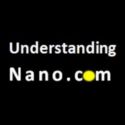



Subscribe to the Forbes/Wolfe Nanotech Report & Get 2 Free Reports

Nanotechnology Now Featured Books



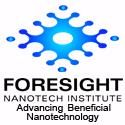
| © Copyright 1999-2012 7thWave, Inc. All Rights Reserved | PRIVACY POLICY :: CONTACT US :: STATS :: SITE MAP :: ADVERTISE |


